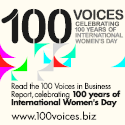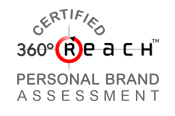Your job, your career, and what you do to earn a living shapes your life and your well being in many ways. Some people love the break no job allows, some learn to make being unemployed work for them, some love to work and return to work quickly, still others buckle under the stress, don’t know what to do, how to find a new job and struggle to find employment and return to work. How are you adapting?
The stress of not having a job and looking for a job may not only have major financial and emotional impact, the impact is long lasting. According to the research by economists Andrew Clark and Yannis Georgellis and psychologists Ed Diener and Richard Lucas that was published the June 2008 issue of The Economic Journal, of the six life-changing events studied, only unemployment has a consistent effect for the five years after the event. Five years! A 60-month impact! That is significant. I see that impact daily! The research is focused on Germans, however I doubt that is would be much different if focused on Americans.
The impact is great for some and not so great for others. The stress of a job search with little focus, a limited plan, and poor execution can throw a talented professionals into a long drawn out search.
A long search can create financial challenges, stale skills, and adaptation to circumstances that often do become a double-edge sword. Don’t get me wrong – adaptation is not a bad thing. It is a good thing that people are adaptable and can flex to a change in schedule, changing seasons, or 30% to 40% cut in pay – that is often the difference between a paycheck and an unemployment check.
However, I see adaptation play out on the other edge of the sword too. Such as behaviors the lead others to make value judgments or have their biases confirmed. Have you adapted to a more casual dress or appearance, a different view of time or activities, a different sense of urgency or sense of value, or a sense of entitlement? How you clarified your view of what is important and what type of work you want to do going forward?
In many cases our behaviors and actions are not perceived by others as we intent. People adapt to their environment over time, some do this with purpose and for some this just occurs. People get used to everything, a style of dress, pace, culture, weather, and income level. It does take time to adjust but everyone adjusts.
The caution I have for those in a search is that employers know people adjust too. If your pace, dress, or attitude has adjusted, take a look to see if this adaptation is one that the employers you are targeting view in a favorable manner. Does the adaptation align with your values and the values or the organizations you want to join?
If the adjustment is not favorable or in alignment, the change may impact how potential employers view you and your ability to get the job done and how you will fit into the culture. The employer’s perception is their reality.
If you don’t at least understand the perception of your target employers, it can be very hard to address the needs or concerns. If the employer’s concern is you have adapted to a slower pace of life or business, or different manner of dressing, and the employer wonders if you can quickly adapt to a high stress, fast pace again, or a standard of business dress, it may be in your best interest to discover and address the concern.
What adaptations have you made?
How do these changes impact your goals?
What are the concerns a target employer might have about your recent adaptations?
Have you adapted too much to being unemployed?
Andrew Clark, Ed Diener, focus, job search, Richard Lucas, Yannis Georgellis


